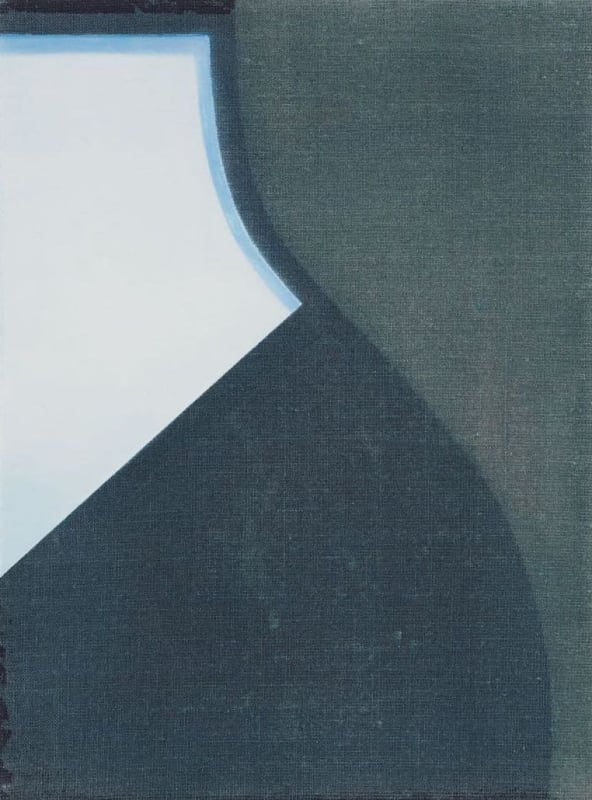BY WILL HEINRICH
Begin with an untitled oil painting the size and shape of a flag. It’s divided with tape-sharp edges, raised enough to cast small shadows but not always perfectly level, into six horizontal bands of subtly varying width. From top to bottom they’re unpainted; a matte-white as flat as plaster; indigo; pale blue; bluish gray; and white again. The egalitarianism of stripes coopts and transforms the white gallery walls and the rough, burlap-colored canvas—the former by association, the latter directly—from concrete realities into signs. Abstraction, Svenja Deininger is arguing, is essentially figurative.
Another, taller canvas of brickish pinks and broader stripes achieves a more relaxed relationship between figuration and abstraction, having and eating the same cake with less effort; but most of this show’s fourteen untitled paintings share the same kind of exhibitionist reticence, using plastery whites, portentous indigos, and strong, simple compositions that rest heavily on the formal economy of edges. One almost entirely white large canvas—a narrow strip of mottled blue runs across the bottom—suggests, with only two ridges of paint angled across the center, both a snowy mountain and crashing waves. Another, smaller white canvas, with its blue edges on top and along the left side, looks more like a blank book—but instead of writing on it, you want to push it aside to see what’s behind it.
On the other hand, the pale blue stripe in the first painting, really a blue dusting over white, and the bluish-gray stripe beneath it could pass for a romantic Arctic seascape—except for the just-too-thick white line dividing them, and the fact, of course, that they’re in the middle of an abstract painting. Figuration, Ms. Deininger is arguing, is essentially abstract.


